- Phone/Text: +8618137163949
- Email: [email protected]
-


What is a concrete batch plant? What is concrete batching plant? Concrete batch plant is a special machine that makes concrete from fixed materials such…
What is concrete batching plant? Concrete batch plant is a special machine that makes concrete from fixed materials such as crushed stone, sand, cement, gravel, water and admixtures. Concrete batch plant usually consists of a mixer, material conveying system, electrical control system, etc. Ideally, the concrete batching plant contains more components, such as mixers, cement batchers, aggregate batchers, conveyors, radial stackers, aggregate boxes, cement boxes, heaters, coolers, cement silos, control devices and other tools and machines.
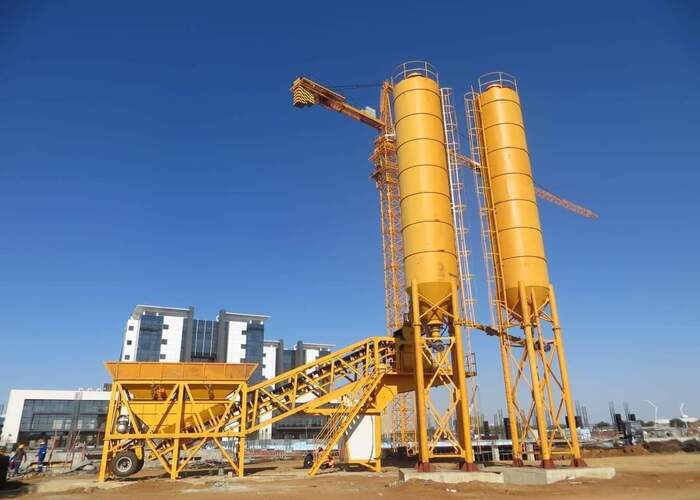
Smat Machine offers a complete range of concrete batch plants for sale.
The construction industry is inseparable from the participation of concrete. The unique properties of concrete batch plants enable batch plant concrete to be used in the construction of skyscrapers, roads, highways, sidewalks and bridges. The application of these materials requires the participation of concrete batch plants.
| concrete batching plant | concrete batch plant | concrete batching plants |
| batching plant concrete | batch plant concrete | batch concrete plant |
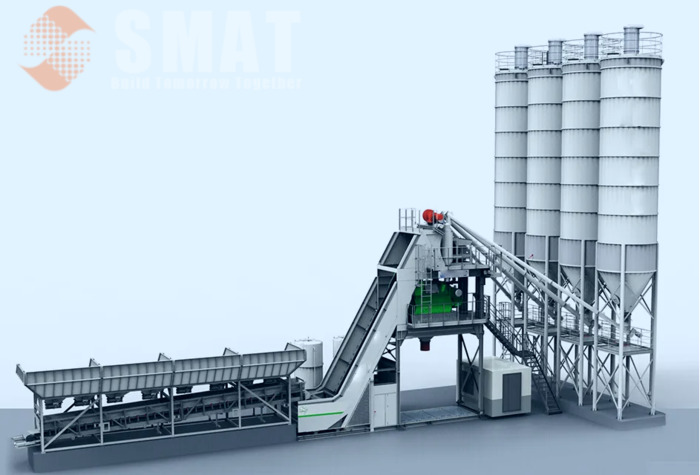
Concrete batching plants consist of several key components, which generally include:
Aggregate silo: A concrete mixer plant has an aggregate silo. It contains important ingredients in concrete production. Such as sand, crushed stone, crushed stone, etc.
Conveyor system: A concrete batching group also has a conveyor system. They ensure a steady flow of materials throughout the process.
Cement silo: A concrete plant plant has a cement silo. This is where the concrete mixer stores cement, which is the key binder in the formation of concrete. SMAT is able to provide one-piece, split, horizontal, vertical, and other types of cement silos to meet your production needs.
Mixing unit: The heart of a concrete batching plant. It mixes aggregates, cement, water, and any auxiliary materials to form the concrete mixture.
Control system: The control system of a concrete batching plant allows the operator to adjust settings. It controls the entire production process.
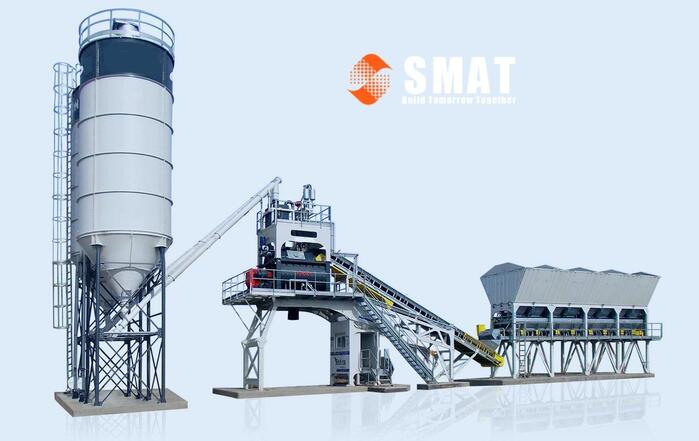
Concrete batch plants can be divided into different types according to different classification methods.
For example, according to the purpose, it can be divided into engineering concrete batching plants (concrete batch plants used for industrial) and commercial concrete batching plants (concrete batch plants used for commercial);
| Engineering concrete mixing plant | Commercial concrete mixing plant |
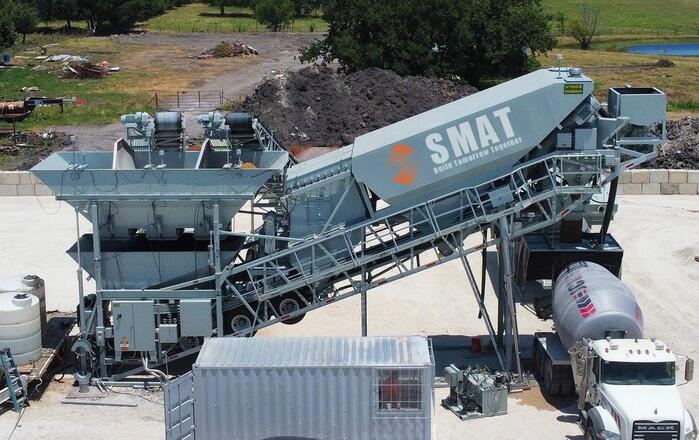
Batching plant concrete can be divided into large, medium and small concrete batch plants according to scale;
Concrete batch mix plant can be divided into manual, semi-automatic and fully automatic concrete mixing plants according to the degree of automation, etc.
| Manual concrete batching plant | Semi-automatic concrete batching plant | Fully automatic concrete batching plant |
In addition to these common types of concrete batching plants, there are also some mobile concrete batch plants and portable concrete batch plants, which are also widely used in industrial construction.
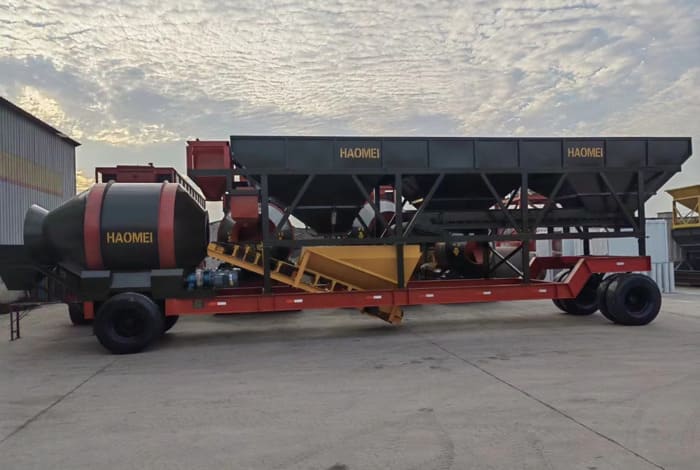
Concrete batching plants are available in various specifications and models. SMAT Machine can provide the most suitable concrete batching plants according to your application scenario.
| Concrete Batch Plant Model | HZS 50 |
| Rated Productivity | 50m3/h |
| Main Mixer | JS1000 |
| Max. Aggregate Diameter | 80mm |
| Capacity of Aggregate Bin | 3×8.3m3 |
| Capacity of weighting Hopper | 1.6m3 |
| Aggregate Conveying Mode | Lift Hopper |
| Aggregate Weighing Precision | ±2% |
| Cement Weighing Precision | ±1% |
| Water Weighing Precision | ±1% |
| Additive Weighing Precision | ±1% |
| General Power | 100 Kw |
| Total Weight | 28T |
| Outline dimension (L*W*H) | 33.8m×14.8m×10.8m |
| Discharging Height | 4.1 m |
| Control Mode | Central control |
| Screw Conveyors (for customers choice) | Φ219mm screw conveyors are used. |
| Model | HZS60 |
| Rated Productivity | 60m3/h |
| Main Mixer | JS1000mixer |
| Max. Aggregate Diameter | 80mm |
| Capacity of Aggregate Bin | 4*8.38m3 |
| Aggregate Conveying Mode | Flat Belt Conveyor |
| Aggregate Weighing Precision | ±2% |
| Cement Weighing Precision | ±1% |
| Water Weighing Precision | ±1% |
| Additive Weighing Precision | ±1% |
| General Power | 110Kw |
| Total Weight | 48T |
| Outline dimension (L*W*H) | 33.8m×14.8m×10.8m |
| Discharging Height | 4.1m |
Aggregate, stone, and stone-made sand are respectively put into the batching bin for precise measurement. After the aggregate is precisely measured, it enters the mixing main unit through the bucket. Fly ash and cement enter the powder scale through the screw conveyor for precise measurement and enter the mixing main unit. Water and admixtures are precisely measured and enter the mixing main unit. Aggregate, cement, fly ash, water, and admixtures are all precisely measured and enter the mixing main unit for mixing.
Aggregate, stone, and stone-made sand are respectively put into the batching bin for precise measurement. After the aggregate is precisely measured, it enters the buffer hopper at the front end of the mixing main unit through the belt conveyor.
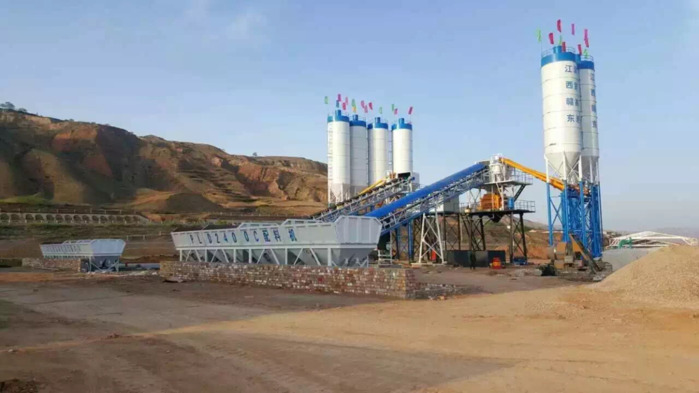
Can using a concrete batching plant bring more benefits? The answer is yes, concrete batching plants have several advantages that contribute to efficient and high-quality concrete production. Here are some of the main advantages of using a concrete batching plant.
Shorten the construction period: The use of a concrete mixing station can speed up the construction speed and reduce the turnover rental costs of equipment, pipe racks and formwork. For construction units, it can shorten the establishment cycle, thereby reducing investment risks.
Improved efficiency: Concrete batching plants automate the mixing process. Therefore, it improves overall project efficiency.
Cost savings: Concrete batching plants can effectively utilize materials and reduce waste. It can save costs on construction projects that use batching plants.
Flexibility: Concrete batching plants can be customized to meet various mix design and production requirements. It provides flexibility to meet project needs.
Environmental benefits: The plant is designed for environmental sustainability. It incorporates features such as dust removal systems and water recycling facilities to minimize environmental impact.
Improved concrete performance: Concrete batching plants usually use mineral active admixtures (such as mineral powder, fly ash, etc.) and admixtures, which can greatly improve the long-term performance of concrete such as waterproofing, anti-freezing, anti-cracking and wear resistance, thereby extending the service life of the building.
Reduce the overall cost: Although the initial investment of the concrete mixing station may be large, it can reduce the overall cost of the project in the long run due to its advantages such as improving production efficiency, reducing material waste, and shortening construction period.
Improve the quality of the project: The concrete mixing station adopts advanced production technology and full computer control, with accurate measurement, which can ensure the stability and consistency of concrete quality. This greatly improves the quality of the construction project and makes the building (structure) more solid and durable.